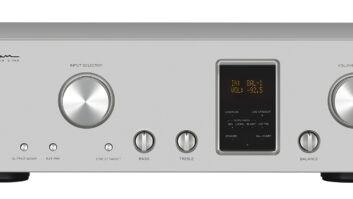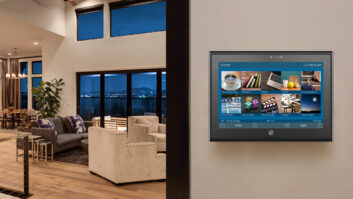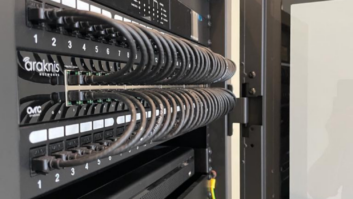In the rapidly emerging world of affordable and network-capable appliances, such as ovens, refrigerators, audio/video equipment, lighting control and alarm systems, a knowledge of IP addressing and the functions of TCP is paramount for effective design and management of home networks. In many cases, standardization between systems has yet to be agreed upon, however the standards of TCP/IP help provide an interface for interoperability of these systems.
The Internet consists of a collection of various data networks. These include public networks, local networks at universities and a number of military networks. Add to this home-based networks containing devices such as A/V equipment, intelligent appliances, alarm and lighting control systems that are able to utilize network resources and you can see that there must be a control system in place to manage the data flow. TCP/IP is one set of protocols that enables these devices to share network resources.
Each device on a network must be uniquely identified and this is accomplished through the use of an address that is permanently assigned to the Network Interface Card (NIC) that provides connectivity to the local network. The NIC may take the form of a physical card added to a computer workstation or an interface built into the chassis of a network capable device. Currently the most common interface is an RJ-45 plug. This looks remarkably similar to a telephone jack with the exception that the RJ-45 uses Category 5 or higher cabling which has eight wires, as opposed to the four-wire Category 3 cabling historically used for telephones. Most new construction includes network cabling, often referred to as “structured cabling,” utilizing Category 5 or higher cable. This provides connectivity for all network devices in the home or business. Just as homeowners, in the past, wanted electrical outlets plentifully supplied now they are desirous of network connectivity throughout their homes.
As long as the traffic on a network stays “local,” not accessing the public network in any way, the management of devices can be fairly simple. This, however, is not realistic as without global access all the resources that the Internet can provide are unreachable. Among these resources are now critical e-mail services and the multitude of sites on the worldwide web many of us have come to rely on. To connect a local network to the Internet it is necessary to have a “legal” address to identify the source and ultimate return destination of data. This global address is referred to as an Internet Protocol (IP) address and is assigned by an Internet Service Provider (ISP). IP addresses are assigned to individual devices on the network in a dotted decimal format. Try entering 66.218.71.198 on the URL address line of your browser and you should be directed to yahoo.com. If you had entered the more commonly used alphabetical address you would have ended up at the same location. Network protocols will translate both numeric or alpha entries into the binary language used on the network, in this example the binary equivalent is 01000010110110100100011111000110. As you can see, either of the previous options are more acceptable to us mere humans.
Now that the network has addressing in place and is ready to send and receive data, TCP/IP provides the process for reliable data transfer between network devices. This is a connection-oriented process that requires establishment of a communication path prior to the transmission of data using the IP protocol. A comparison may be drawn between this procedure and that of making a telephone call. The user dials a phone number and is connected to a local switch, not directly to the destination number. The switch receives the dialed number and decides whether the destination is on the local network. If the number is local, the switch enables the connection and when the destination phone is answered a session is established. If the final destination is beyond the scope of the local network the switch forwards the connection information to a neighboring device that in turn, makes a connection or forwarding decision until the final destination is reached and the session is established. In the same manner the user “dials” a web site using a browser such as Internet Explorer by entering the URL address.
Once the data path has been established TCP provides the reliability factor. TCP’s functions include formatting the data and providing acknowledgment of receipt of data at the destination. TCP analyzes data streams that an application such as MS Word wants to send to another device. If the amount of the data stream exceeds a manageable size, TCP will break the stream into segments for effective transmission. These segments will be sequentially numbered for reassembly at the destination. An analogy to this process would be the shipment of a package via a national parcel service. If the package is too heavy or too large the shipper would require that it be split into smaller units. Each of these units would be individually labeled and designated as part of a multiple shipment. As the packages reach the final destination, it would be noted that the entire shipment consists of more than one item and the packages would be held until all were received.
TCP/IP operates in the background and requires little user intervention. A home network with high-speed service supplied by a telephone company (DSL or ISDN) or a cable company can be automatically configured using a low cost gateway router. The router enables all the devices on the inside network to share the single (legal) IP address supplied by the ISP and allocate private, internal addresses to the connected devices. This process is called Network Address Translation (NAT) and can be a fairly complicated procedure, if it has to be manually configured. The good news is that most consumer gateway routers will perform this process automatically and all the user is required to do is program the addressable devices to use the TCP/IP protocol and to request a private address from the router. These gateway routers are extremely flexible devices and configured properly can provide innumerable services to the home or business owner.
There are many aspects to consider when designing a networked home. Connectivity to the router and the Internet can be accomplished using wired and wireless methods. Wired connectivity can be provided using CAT5 or better network cabling or existing electrical wiring. Wireless connectivity can ease installation as no cable runs need to be added and the speed of wireless transfer while not as rapid as a wired network may well suffice for most users.
In this article we have seen a simple overview of a complicated process. For those of you that are as fascinated as I with the unlimited access to the Internet’s informational database, you might want to consider enrolling in courses at a local community college. Many of these colleges also offer courses in home integration that educates homeowners and professionals alike in the basics of networking and the creation of a fully networked home.
Richard Reynolds ([email protected]) is a certified home integration specialist and currently serves as the Networking Department Chair at Pikes Peak Community College in Colorado Springs, Colorado, and is a subject matter expert consultant to Cisco Systems educational services.






